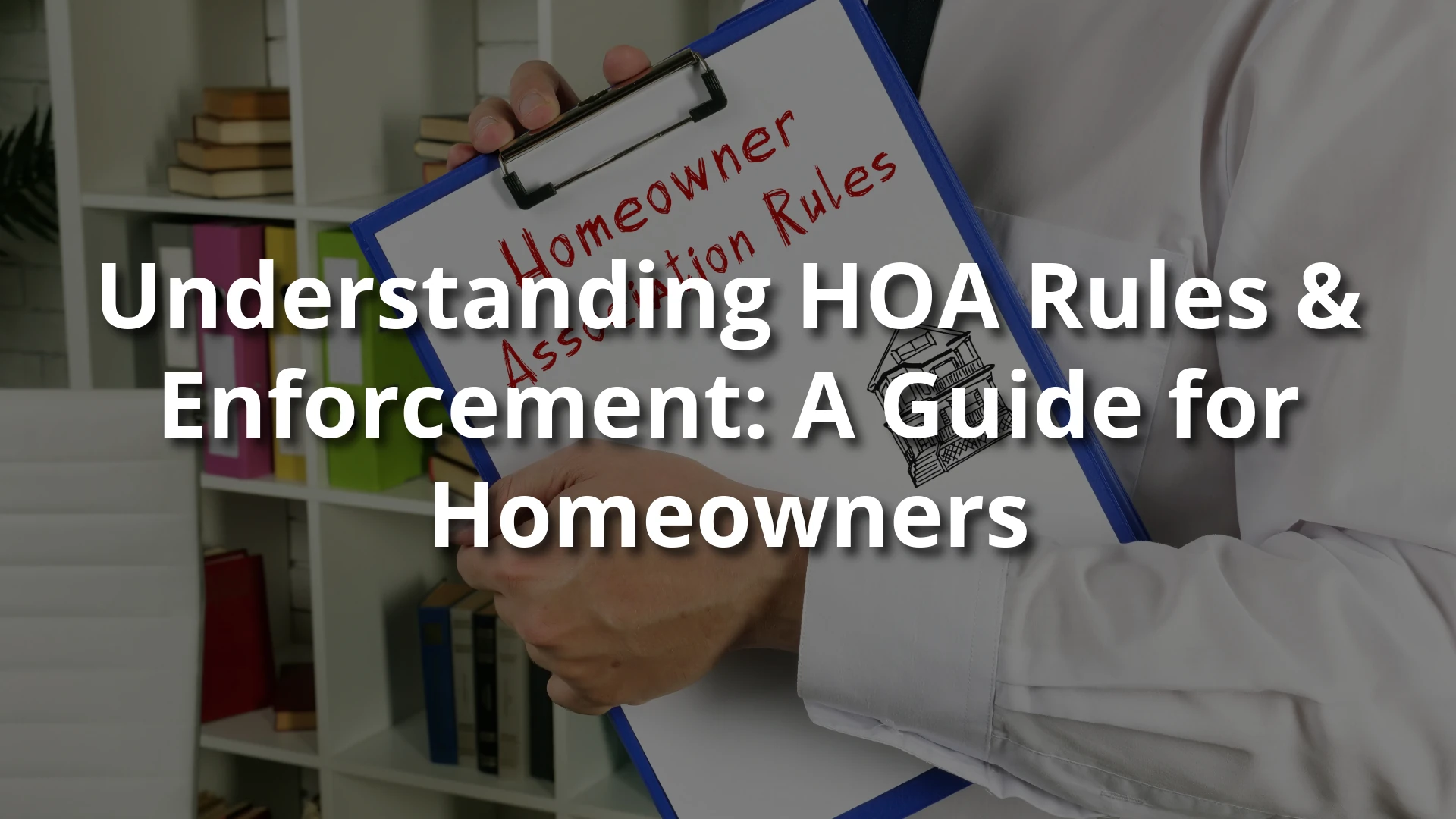Living in a homeowners association (HOA) community offers many benefits, from well-maintained amenities to enhanced property values. But with those benefits come certain responsibilities, including following HOA rules set by the association. These rules, and the documents that govern them, help preserve the appearance, safety, and harmony of your community. Whether you’re a board member or homeowner, understanding how HOA governing documents work and how rule enforcement is handled is essential to maintaining a thriving neighborhood.
What Are HOA Governing Documents?
Every HOA operates under a set of legal documents that outline how the community is structured, managed, and regulated. These documents include:
- Recorded Plat or Map: This defines lot boundaries, common areas, easements, and layout-specific restrictions.
- Declaration of Covenants, Conditions & Restrictions (CC&Rs): Often called the community rulebook, this document spells out what homeowners can and cannot do with their property, and the HOA’s rights to enforce those rules.
- Articles of Incorporation: This establishes the HOA as a legal entity and is filed with the state.
- Bylaws: These detail how the HOA operates, including board member roles, election procedures, and meeting requirements.
- Rules and Regulations: These cover the day-to-day expectations for residents, including guidelines on pets, parking, landscaping, and amenity usage.
According to Texas law, HOA governing documents must be recorded and made publicly accessible (Texas Property Code Section 202.006). Homeowners can usually find them via the community website, management company, or county records office.
Common HOA Rules Every Homeowner Should Know
While specific rules vary by community, there are several categories of HOA rules that are especially common in Texas:
- Architectural Guidelines: Homeowners must often submit requests for exterior modifications, including paint colors, fences, or additions.
- Landscaping Requirements: HOAs may regulate lawn care, plant types, and tree trimming to maintain curb appeal.
- Parking Restrictions: Many HOAs limit on-street parking or prohibit oversized vehicles and trailers.
- Noise and Pet Policies: These include quiet hours and restrictions on the number, breed, or size of pets.
- Holiday Decorations and Trash Placement: Rules typically govern how long decorations can be displayed and when trash bins must be brought in.
It’s also important to note that Texas law prohibits HOAs from banning certain activities, such as displaying U.S. flags, installing solar panels, or using rainwater harvesting systems, regardless of community rules.
How HOA Rule Enforcement Works in Texas
Enforcing HOA rules is essential for maintaining standards across the community, but enforcement must follow specific legal and procedural steps.
- Warning and Violation Notices: Most violations start with a courtesy notice or formal written warning.
- Fines: If the governing documents permit it, HOAs may levy fines for repeated or serious violations—but only after following due process (Texas Property Code Section 209.0061).
- Self-Help Remedies: Some HOAs have the authority (if stated in their documents) to correct a violation themselves and bill the homeowner.
- Legal Action: In rare cases, unresolved violations may lead to mediation, arbitration, or civil litigation.
Board members should ensure enforcement actions are consistent, transparent, and documented. Enforcement policies must be made available to all residents and applied fairly to avoid disputes.
Conclusion
HOA rules exist not to control homeowners but to protect the integrity, value, and enjoyment of the community. Understanding your HOA’s governing documents and how rules are enforced can help you avoid violations, resolve conflicts, and contribute to a more respectful and attractive neighborhood. For homeowners and board members alike, staying informed is the key to successful community living.
If your HOA needs support with rule enforcement, document management, or day-to-day operations, Creative Management is here to help. Our experienced team is committed to guiding your community toward clarity, compliance, and cohesion.


